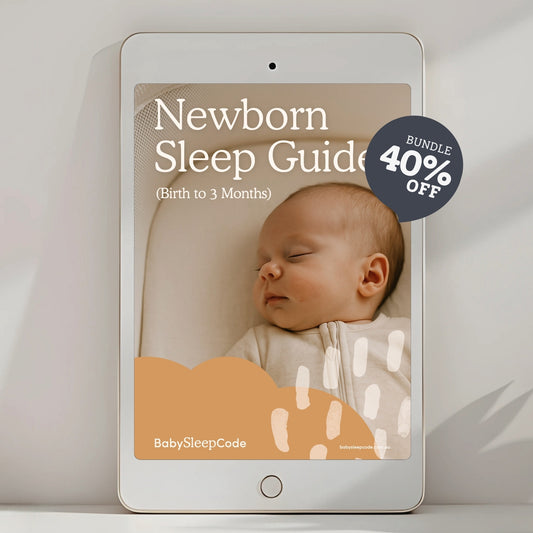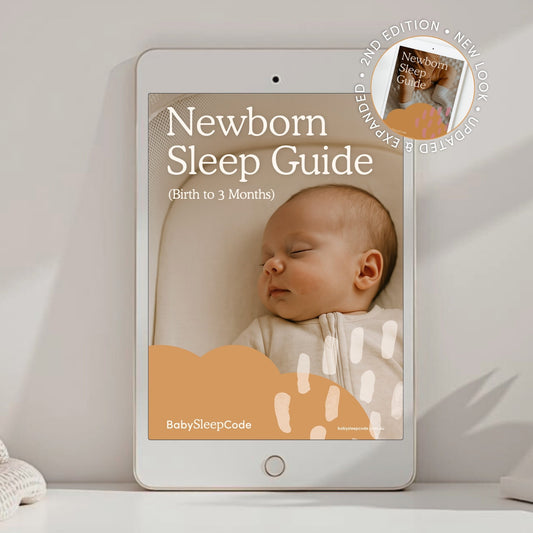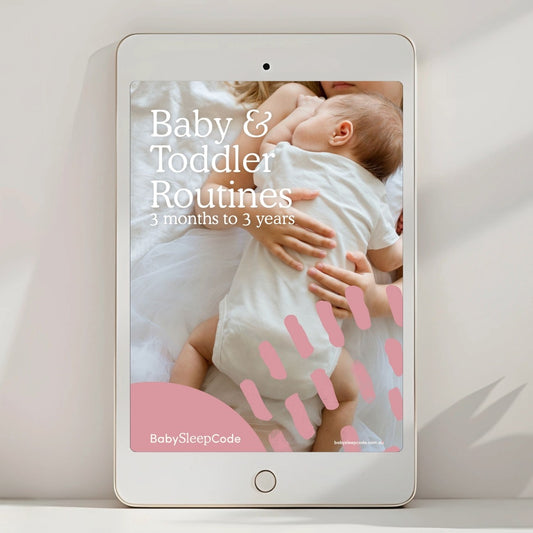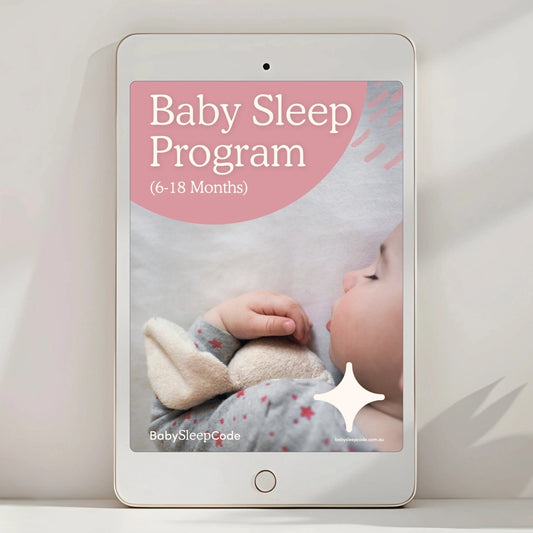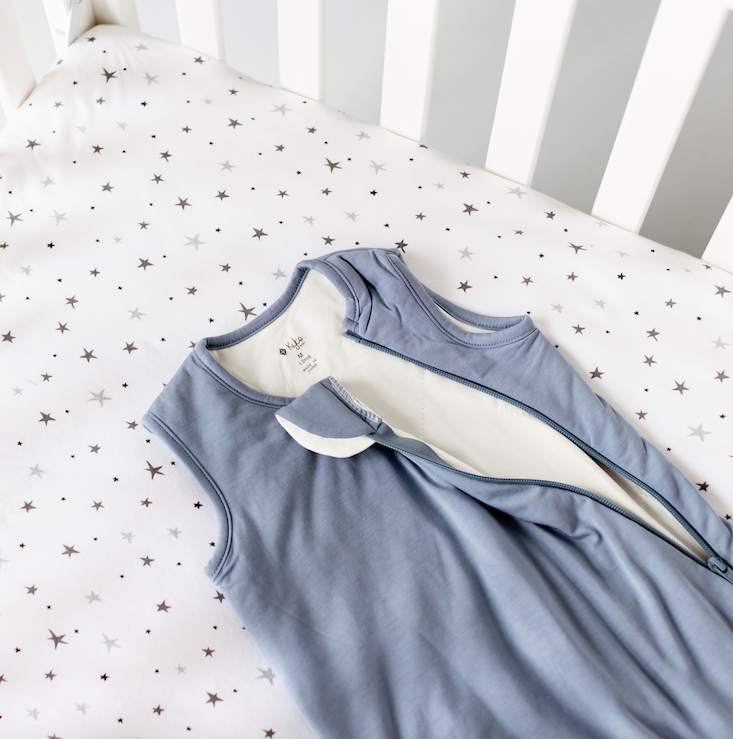Winter nights can be tough—cold, dry air and fluctuating temperatures leave many parents guessing how to keep their little one warm and safe while they sleep. It’s all about finding that sweet spot where your baby is cozy without letting them overheat. Here’s how to nail it so everyone can get some solid shut-eye this winter.
What temperature should a baby sleep in during winter?
The ideal room temperature for babies is between 68–72°F (20–22°C). If you can safely maintain a consistent moderate room temperature, you’ll find it much easier to get their sleepwear layers right. But we have found babies can sleep just as well in a room as low as 16°C/61°F as long as they are dressed appropriately for that temperature.
Keep in mind that room temperatures can fluctuate significantly during winter nights. A room thermometer placed near your baby’s crib at mattress level is the most reliable way to monitor the temperature. Be cautious of relying on baby monitors with built-in thermometers, as these can give inaccurate readings.
If the temperature drops below 68°F (20°C) overnight, consider using a safe heater with to maintain warmth throughout the night. If a heater isn’t an option, you can switch to a warmer sleeping bag after a night feed to help your baby stay comfortable as the temperature dips in the early morning hours.
Is it safe to use a heater in the baby’s room?
Yes, heaters can be used safely with proper precautions:
- Choose a heater with safety features: Look for models with automatic shut-off, cool-touch exteriors, and adjustable thermostats. Oil-filled or panel heaters are great options for maintaining consistent warmth.
- Place it thoughtfully: Position the heater well away from the crib and ensure it isn’t directing hot air onto your baby or too close to anything else that may be a fire hazard.
- Inspect before use: If the heater hasn’t been used in a while, check for wear and tear before plugging it in, and always follow the manufacturers safety directions.
- Always prioritize safety by avoiding overheating the room. Overheating is a known risk factor for SIDS, so aim for a slightly cooler room with appropriate layers rather than an overly warm environment.
What should a baby wear to sleep in winter?
When dressing your baby for winter sleep, safety should always be the top priority. Loose blankets are not recommended for babies under 12 months (and ideally not until they’re over 2 years old and in a toddler bed) due to the risks of suffocation, entanglement, and overheating. Instead, opt for sleep sacks or sleeping bags that stay secure, so your baby can’t kick them off and will stay warm and cozy all night long.
For newborns who haven’t started rolling yet, swaddling can provide extra warmth and comfort, helping to keep them snug and calm while they sleep.
Additionally, layering pajamas under their sleeping bag is a great way to add warmth. Choose natural fibers like cotton, wool, or bamboo, as these materials are breathable and help regulate temperature. Avoid synthetic fabrics such as polyester or fleece, as they trap heat and moisture, making your baby feel clammy and uncomfortable even in cooler temperatures.
What TOG Rating is best for winter?
A TOG rating indicates how warm a piece of baby sleepwear will keep your baby. For winter, the most commonly recommended TOG ratings for sleeping bags are:
- 2.5 TOG: Ideal for rooms between 71.6°F and 75.2°F (22°C - 24°C).
- 3.5 TOG: Best for cooler rooms or temperatures below 71.6°F (22°C).
When selecting sleepwear, always pair the TOG rating with appropriate base layers to ensure your baby stays comfortable throughout the night.
Remember, temperature and humidity levels can feel different depending on how your home is heated or cooled. For example, the same temperature on a thermometer may feel warmer in a heated room compared to a cooled room, due to factors like air circulation and humidity. Because of this, these guidelines are just that—guides. Your home may feel completely different from another, even at the same temperature. Always trust your judgment and assess your baby’s comfort when choosing what to dress them in.
How to layer your baby’s sleepwear for cold winter nights:
Layering is a practical way to keep your baby warm without overheating. Here’s a simple guide:
- Base layer: A short-sleeve onesie or singlet in cotton or bamboo.
- Middle layer: Long-sleeve footed sleep suit or long sleeve pajamas.
- Outer Layer: A long-sleeve sleep sack, sleeping bag, or swaddle (for babies who are not yet rolling) with the appropriate TOG rating to match the room temperature.
- For particularly cold nights: Consider adding lightweight cotton socks or swapping the base layer for a long-sleeve onesie.
What crib sheet fabrics are best for winter?
When selecting crib sheets for winter, opt for warm, breathable fabrics that feel cozy against your baby’s skin:
- Flannel: Soft and warm with a slightly brushed, cozy texture. Ideal for cooler nights.
- Jersey Knit: Soft, and stretchy. Great for year round temperatures.
- Avoid Synthetic Fabrics: They can trap heat and make your baby too warm, and sweat.
Signs your baby might be too cold or too hot while sleeping
Babies can’t tell us they’re uncomfortable, but their bodies give clear signs:
Signs that your baby may be too cold include:
- Cold face or neck (hands and feet may feel cool but aren’t reliable indicators).
- Early morning wake-ups around 3–5:30 AM.
- Settling quickly in your arms but waking soon after being placed back in the crib.
Signs your baby might be too hot include:
- A red, flushed face and noticeable sweating.
- Rapid breathing.
- A clammy back, neck, or head.
- Waking frequently with short cries but settling quickly after repositioning.
- Sprawling out in a starfish-like position, which can be their way of trying to cool down.
If your baby is too cold, add another layer. If they’re too hot, reduce layers or open a window to allow fresh air to circulate back in.
Can babies sleep with blankets in winter?
No, blankets are not safe for babies under 12 months (and ideally not until they’re over 2 years old) due to the risk of suffocation, entanglement, overheating, and SIDS. Instead, opt for sleep sacks or sleep suits specifically designed for babies. These options offer the same warmth as a blanket but with none of the associated safety risks.
Should I use a humidifier in baby’s room during winter?
While it’s not mandatory, a cool-mist humidifier can help combat dry winter air, reducing nasal congestion and preventing skin irritation like eczema. Just be sure to clean it regularly to prevent mold or bacteria buildup.
What if my baby wakes early on cold mornings?
Cold air is often the culprit behind those early morning wake-ups. Try adding an extra layer or using a safe heater with a thermostat to maintain consistent room warmth during the early hours.
Creating a safe and comfortable sleep environment in winter
Research shows a clear link between overheating and an increased risk of sudden unexpected death in infancy (SUDI). Ensuring your baby stays warm and cozy while prioritizing safety is essential. A few simple adjustments can make your baby’s crib winter-ready:
- Insulate the room: Use draft stoppers and heavy curtains to block cold air.
- Place the crib wisely: Position it away from windows, doors, exterior walls, and direct heat sources to avoid both cold drafts or overheating.
- Maintain a safe sleep space: Keep the crib free from loose blankets, toys, or pillows. Never allow your baby to sleep wearing hats, beanies, or bows to ensure their face and head remain uncovered. The mattress should be firm and flat; never add an underlay, such as wool, as it can interfere with air circulation and increase the risk of overheating.
- Prioritize a safe sleep position: Always place your baby on their back to sleep. Babies regulate their temperature primarily through their head and face, which should remain uncovered for safe sleeping.
- Monitor room temperature accurately: If you’re not room sharing, ensure you have a reliable thermometer to track the room’s temperature consistently.
Winter sleep doesn’t have to be a guessing game. With the right strategies and a little preparation, you can keep your baby cozy and safe all season long.
If you’re ready to take the guesswork out of sleep altogether, our sleep guides are your ultimate resource. From newborn to toddlers, they’re packed with everything you need to build great sleep foundations, including week-by-week nap and feeding routines and clear, easy to follow sleep plans.
Transform your baby’s sleep, and nurture a happier, well-rested baby. Join the thousands of families who follow the Baby Sleep Code routines and sleep guides.


